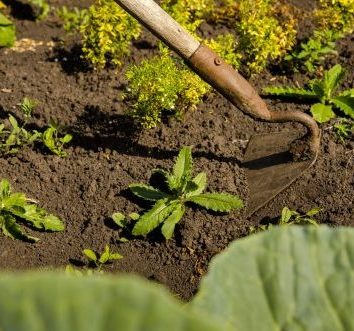- Lawn Turf
- Artificial
- Soil
- Timber
- Composite Decking
- Paving & Stone
Get In Touch With Our Experts Today!
Give us a Call! - Seed & Fertiliser
- Dressing
- Bark

May 29, 2024
Has your lawn started looking more like a weed invasion than a gorgeous grass carpet? It’s scary how quickly weeds can quickly creep up and take over. But with the proper weed and feed process, you can restore your lawn to its former premium turf glory!
Weed and feed is a powerful substance that can help get rid of weeds and transform your lawn. But there are some important things to know before you get going. Like, if it’s not applied correctly, or if it is applied excessively, you risk damaging your lawn, resulting in further damage.
This guide talks you through the steps to weed and feed your lawn successfully.
As the name suggests, this is an impressive two-in-one product that not only rids your lawn of unwanted weeds or moss but feeds the remaining grass blades, encouraging healthy growth.
Weed and feed consist of nitrogen, phosphorous or potassium and are available in liquid or seed form for easy application. It’s an effective process that allows gardeners to revive their lawns without returfing them completely. It also provides essential care to your existing lawn to sustain thick and consistent growth.
Due to the chemicals within the substance, it is recommended that you weed and feed your lawn no more than twice a year. And when done right, this is more than enough to keep your lawn in good nick! When it comes to the right time to weed and feed, you’ll want to avoid wet and windy weather, as these can wash or blow the solution away before it even begins.
You also want the air temperature to be around 15 degrees. This is why spring or autumn is the best time to weed and feed your lawn in the UK; however, keep an eye out for those unpredictable April showers! Check the forecast and plan a week when the weather looks warm and dry; then, you’ll be good to go.
It’s strange, isn’t it? How can one product kill one plant but help another thrive? We might not know the exact science behind it, but essentially, it has three core phases:
This process lets you see where the weeds have died off and where healthy grass remains. This makes it easier to identify the areas of your lawn to reseed.
Firstly, it’s important to note that you should only apply weed and feed to lawns at least six months old. Second, when it comes to weed and feed, timing is everything! As we mentioned earlier, you’ll need to allocate a dry, warm, and wind-free week for the best results! Once you’ve pencilled that in, follow these steps:
Over the next few weeks, you should notice your lawn changing and your weeds retreating (hallelujah!) We recommend waiting at least four weeks before reseeding your lawn. Weed and feed can prevent germination, so you want to ensure it is fully absorbed.
To reseed your lawn, start by aerating the soil and scatter your seeds evenly. Keep them hydrated and leave them for a few weeks to fully anchor in. And, hey presto, your beautiful new lawn should look fresh, healthy, and completely weed-free!
To get the most from your weed and feed for long-lasting lawn results, speak with the George Davies team today; we’re always happy to help.
CALL US NOW ON 01234 818 253